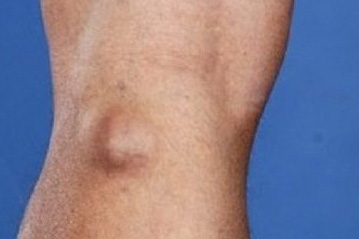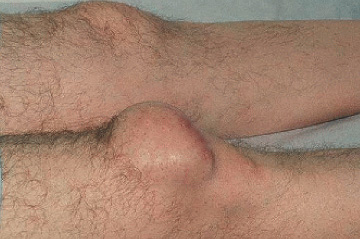What is Bursitis?
Around the knee joint there a number of Bursae which are synovial sacs that produce fluid to protect the joint from damage. Sometimes they can be damaged or become inflamed which can cause symptoms. For example there is a bursa at the front of the knee which can be irritated by kneeling and becomes swollen. This is called Carpet-layers knee or Housemaids knee.
Symptoms of Bursitis
The first symptom of a bursa problem is normally swelling and pain. This in turn leads to loss of movement as the swelling causes tightness.
Treatment for Bursitis is:
1. Rest
2. Ice
3. Compression bandage
4. If the swelling does not resolve the doctor may aspirate the fluid from the bursa
5.Steroid injection
6.Remove the bursa with surgery


Bakers cyst
This is a swelling in the bursa behind the knee.
This bursa is connected with the knee joint directly and so if there is a problem within the knee joint which leads to swelling in the knee joint this may extend into the bursa behind the knee.
A Baker’s cyst can also sometimes occur if you have a health condition such as:
- Osteoarthritis– usually caused by age-related “wear and tear” of joints; it particularly affects the knees, hips, hands and big toe
- Rheumatoid arthritis which is a less common type of arthritis and is caused by the immune system attacking the joints
- Gout– a type of arthritis that usually affects the big toe and is caused by a build-up of the waste product uric acid in the blood
Baker’s cysts are more common in women than men, probably because women are more likely to develop osteoarthritis and rheumatoid arthritis.
Treatment as above:
Ice, painkillers and treat the underlying cause
See Ice as a treatment article here
